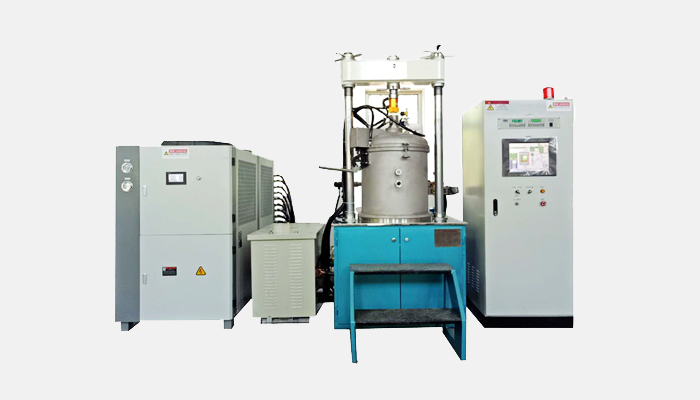
A vacuum hot press setup is a manufacturing process used to apply heat and pressure to materials under controlled conditions. It is commonly used in various industries, including aerospace, automotive, and electronics, for the fabrication of advanced materials and components.
The setup of a vacuum hot press typically consists of a high-temperature chamber with a heating element, a press mechanism, and a vacuum system. The chamber is often made of stainless steel or other heat-resistant materials to withstand the high temperatures required.
The heating element, usually electric or gas-powered, provides the necessary heat to raise the temperature inside the chamber.
The press mechanism is responsible for applying pressure to the materials being processed. It typically comprises hydraulic or pneumatic cylinders that exert force on a platen or mold, which contains the materials. The pressure applied can vary depending on the requirements of the specific application. The vacuum system is used to create a controlled vacuum environment inside the chamber by removing air and other gases. This is important as it ensures uniform heating and prevents oxidation or other unwanted chemical reactions during the process.
The process of vacuum hot pressing involves several steps. Firstly, the materials to be processed are placed in a mold or on a platen inside the chamber. The chamber is then evacuated using the vacuum system, removing the air or any other gases that may be present. This is essential to create a vacuum environment with low-pressure conditions.
Once the chamber is sufficiently evacuated, the heating element is activated, gradually raising the temperature inside the chamber. The temperature and heating rate are carefully controlled to prevent thermal damage to the materials and achieve the desired material properties. The materials may be heated to temperatures ranging from a few hundred degrees Celsius to several thousand degrees Celsius, depending on the materials and the desired outcome.
As the temperature increases, the pressure is also applied using the press mechanism. The pressure is carefully controlled to ensure proper compaction and bonding of the materials. This process is vital for achieving dense and uniform material structures and eliminating any voids or defects.
The combination of heat and pressure in a vacuum environment promotes various material processes, including densification, sintering, diffusion bonding, and other thermal treatments. These processes result in improved material properties, such as increased strength, enhanced electrical conductivity, improved wear resistance, or enhanced structural integrity.
Once the desired time cycle has been completed, the heating element is turned off, and the cooling process begins. The chamber is gradually re-introduced to atmospheric pressure, and the materials are allowed to cool under controlled conditions to avoid thermal shock.
In summary, a vacuum hot press setup is a sophisticated manufacturing process used to apply heat and pressure to materials in a controlled vacuum environment. It allows for the fabrication of advanced materials with improved properties and is widely employed in various industries for the production of high-performance components and structures.